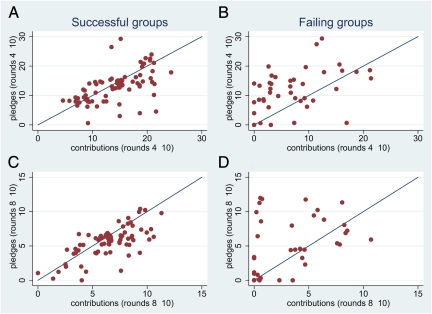Fig. 2.
Departure from announced contributions and its link to success. The probability that a player belongs to a successful group decreases with the contribution-pledge gap, i.e., with the differences between cumulative contributions and the corresponding amounts pledged both early (rounds 4–10, Probit; P = 0.002) and later (rounds 8–10, Probit; P = 0.032) in the game. All regressions have group-cluster robust SEs to take into account outcome interdependence among participants; regression tables and marginal effects interpretation are provided in SI Text. (A and B) Link between success and adherence to the initial pledge is visually confirmed. For the groups that provided the public good (A), the contribution-pledge gap is tighter than for the unsuccessful ones (B), as indicated by the dispersion around the bisector. Similarly for the second pledge, greater clustering around the bisector takes place in C than in D. A small random noise (5%) has been inserted to make all data points visible.

